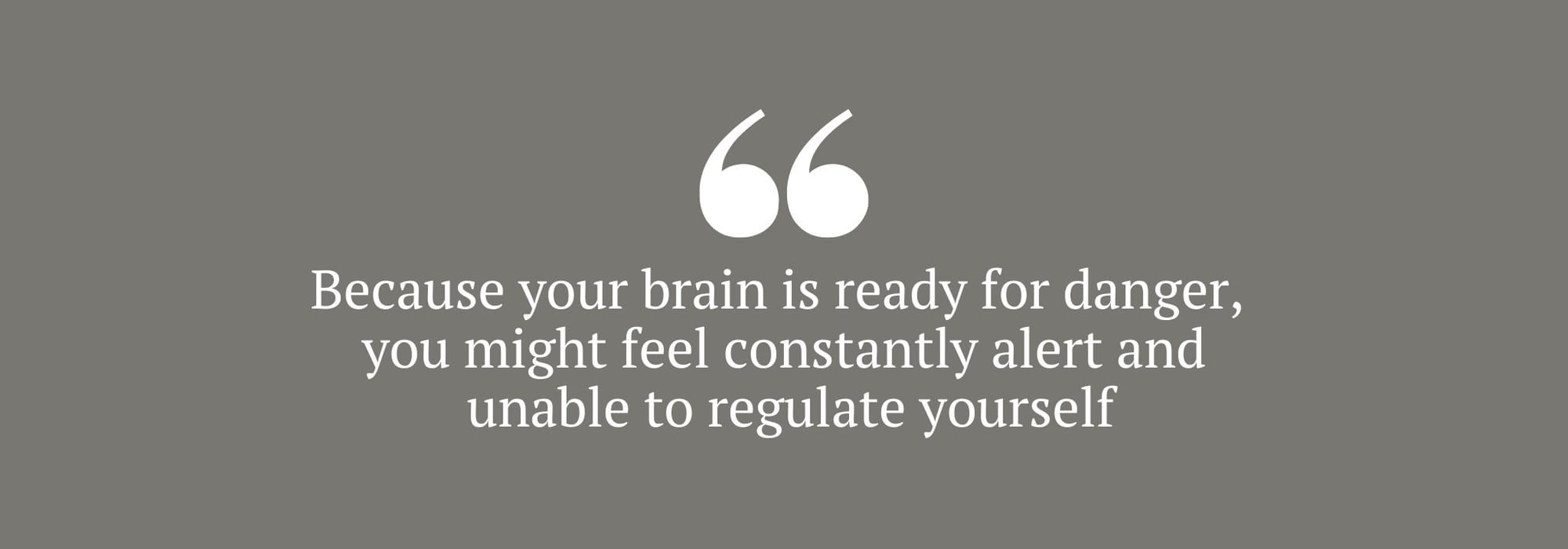A trauma-informed therapist breaks down what functional freeze is, and why you might be mistaking it for depression
From world events to political unrest, societal expectations and personal pressures, many of us seem to be feeling the burden of countless mounting stressors impacting our daily lives. And with this influx of uncertainty, anxiety, and stress, sometimes it can be a little difficult to place exactly what it is that you are struggling with.
We are all quite aware of depression, and so our first instinct may be that it’s the best explanation for your low mood and low energy, but many people are now experiencing something often described as ‘tired but wired’. This doesn’t quite fit the depression diagnosis, and could actually be a sign of something different.
While you might find that you can carry out the basic functions of life, such as going to work or school, completing essential tasks, and maintaining core relationships, you can’t seem to shift a feeling that things aren’t quite right. You may feel disconnected from the world, emotionally numb, anxious, and find that the things that would usually bring you joy start to fall by the wayside. If this sounds familiar, then you may be experiencing functional freeze.
What is ‘functional freeze’?
While depression is thought of as a disorder characterised by low mood and a lack of joy or excitement, functional freeze is understood as a response to trauma or ongoing stressors. It is our mind and body’s way of protecting us from what is perceived to be a threatening or frightening situation. When this continues for a long period of time, our nervous system can get sort of stuck.
Unlike the more active fight-or-flight response, which you’ll likely have heard of before, the freeze response is when we shut down in preparation to deal with the ‘attack’. A person in a freeze state can lose the ability to communicate or act. They may physically change temperature, feel heaviness in the body, and seem, well, frozen. It appears to be completely involuntary, as a different part of the brain takes over and our logical thinking becomes difficult.
Often this defence mechanism is developed if you experience trauma that you cannot get yourself out of, for example, a child who cannot fight back against an abusive parent or leave the home. Instead, the person learns to shut down, which also comes with disassociation, or mentally checking out and disconnecting for protection.
Usually once the threat or stressor goes away, our nervous system will start to calm, returning from a fear state into a relaxed one. However, if the stressor does not go away quickly and we remain in a state of stress, fear, or overwhelm for a long time, then we can move into functional freeze. While you can still engage in life, you may find that it impacts your work, relationships, and wellbeing. But the positive in all of this is that recognising that what you are feeling is coming from a heightened nervous system, enables you to find ways to soothe it, and begin to move out of this difficult state.

The difference between functional freeze and depression
Being able to identify what you are experiencing is key to getting appropriate treatment and support. When it comes to functional freeze and depression, there can be some overlap in symptoms which might make this tricky. These can include:
-
Wanting to isolate yourself. You feel the desire to shut yourself away, ignore calls or messages, and cancel social plans. It just feels difficult to be around people at the moment.
-
Feeling numb. It might be hard to connect with your emotions or place how you really feel about things. What used to bring you joy now doesn’t seem to interest you as much, and it’s tough to get excited about things. This is the dissociative part, as you disconnect from yourself.
-
A sense of exhaustion. Beyond just your usual tiredness, your body feels a deep exhaustion. Limbs can seem heavy, which can make it difficult to get out and do physical activity. You may even experience a lower body temperature and shivering, which is difficult to explain. This could leave you preferring to stay in bed or on the couch.
-
A lack of motivation. It can feel like there is just so much to do, and yet finding the motivation to do it is increasingly difficult. Doing those typical things for your self-care or wellbeing feels too hard to manage, and they may begin to slip. You might lose yourself in procrastination or doing nothing.
-
A feeling of hopelessness). One common experience described in trauma responses is feelings of hopelessness and helplessness. You may feel stuck and unsure how you can ever get out of feeling this way, but there is always hope and talking about this is so important.
In terms of how functional freeze differs from depression, there are some specific signs to watch out for:
-
Feeling wired. The main difference that people describe is that underneath all of the feelings of exhaustion is a nervous energy and ongoing anxiety. This can make it very difficult to truly rest and relax. While it’s hard to get moving, staying still just doesn’t feel comfortable.
-
Difficulty focusing. It may seem as though your thoughts are all over the place, and you have a hard time focusing on what you need to do. Your mind can feel as though it’s racing, and getting a clear picture of things can be a challenge.
-
Constant alertness. Because your brain is ready for danger, you might feel constantly alert and unable to regulate yourself. Your senses, such as hearing, can become heightened, leading to overstimulation, and you may have a feeling of ongoing risk or impending danger. This state of arousal can become uncomfortable.
How to address and overcome functional freeze
While it may feel difficult at the time, there are ways to move forward once you identify a freeze response. And although it can seem counterproductive when you already feel stuck, calming is absolutely key. The following things can help soothe a heightened nervous system and reconnect with the world:
1. Spend time in nature. Go for walks, get in the garden, or swim in cool water. Regain your sense of self in the world.
2. Enjoy light exercise. Yoga and stretching have been found to be incredibly helpful for easing trauma, and drawing awareness back into the body.
3. Focus on your breathing. Regulating your breath lets your brain know it can relax. Breathing in for four, holding for four, and breathing out for eight can be a simple yet effective way to help with regulation.
4. Try mindfulness and meditation. Slow down and connect with the present moment, as trauma responses often hold us in the past. Use a guided meditation, or simply sit and draw awareness to what you can touch, see, hear, and also smell.
5. Sing. Play your favourite song and let it all out. Singing with a group, or at a gig, has been found to be even better than solo, as it also builds a sense of connection.

Professional support can always be beneficial, too. Whether it’s a result of ongoing stress in your daily life, or a response to previous life experiences, talking to a trauma-informed therapist can help. They can support you and assist in gaining understanding of the root cause, so that you can begin to move forward and live life out of a functional freeze state.


Comments